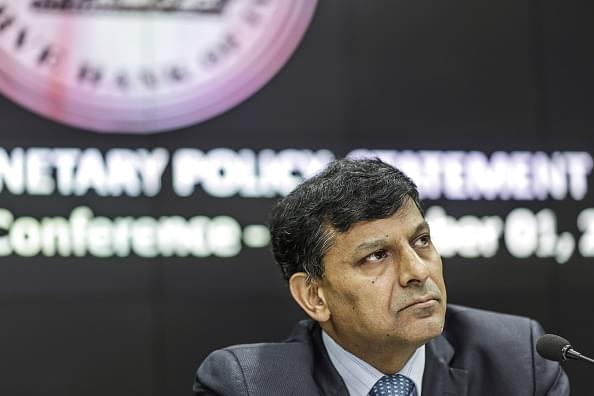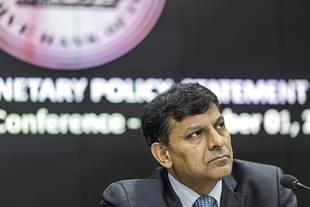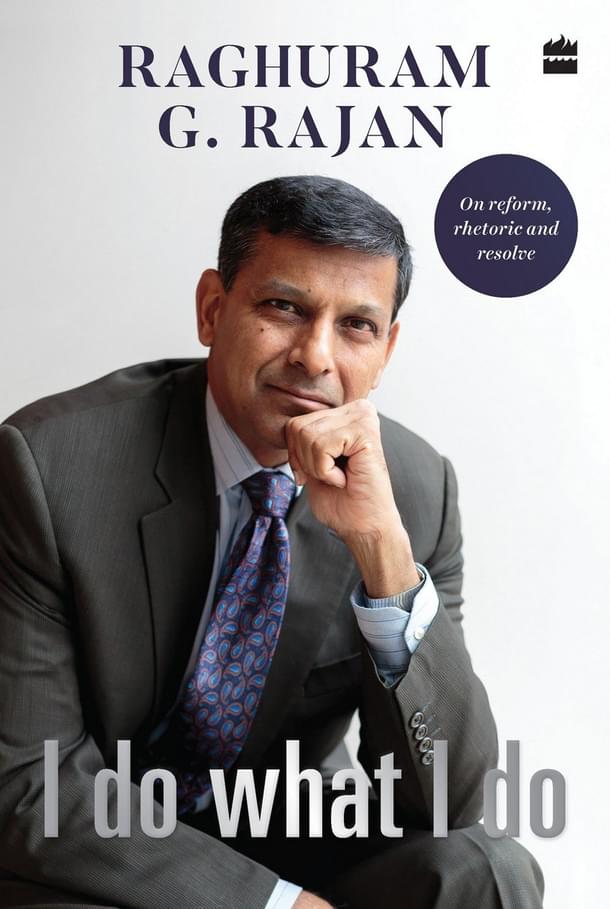Magazine
Raghuram Rajan: What He Did Do
Seetha
Oct 06, 2017, 05:06 PM | Updated 12:47 PM IST
Save & read from anywhere!
Bookmark stories for easy access on any device or the Swarajya app.


Days after Raghuram Rajan wrapped up a hectic round of book launches, a pdf file of I Do What I Do was being forwarded over WhatsApp. This isn’t new — authors have seen their books being sold at traffic junctions even before they’ve got a copy. But pirated copies are sold and make money for someone; this was being circulated free. So who stands to gain?
One conspiracy theory was that this was meant to hit at the BJP because the book shows the government in poor light. Well, whoever was motivated by this or whoever floated this theory has not read the book. Rajan has ample reason to be miffed with the government for not doing enough to put a stop to the relentless sniping that he was subjected to by a large section of the BJP. Anyone in his place would have been tempted to hit out in retaliation. But this book is not going embarrass the government.
One, Rajan acknowledges, in the introduction, that the government gave him a free hand and that he enjoyed a good understanding with Prime Minister Narendra Modi and Finance Minister Arun Jaitley. Two, he has made it very clear that he is not revealing any one-on-one conversations.
So the book is, disappointingly, not a tell-all memoir of Rajan’s years at the helm of the Reserve Bank of India (RBI). It is a collection of some of the speeches and public statements he made (including the controversial ones). There will probably be nothing new in them for people who have followed the central bank and Rajan’s tenure closely. Barring, of course, his admission that there had been discussions about demonetisation during his tenure and he had suggested the best way to go about it; and that the way it was done was not the best way.
The notes that precede every speech — putting them in context, countering criticism and offering explanations — do, however, have something new to offer. In fact, these make for more interesting reading than the speeches themselves.
One note has him admitting to being embarrassed by the rock star label that his statement on the day he took over earned him and the “sex is back in the Sensex” remark of author and socialite Shobhaa De. When he ran into her later, he found her as embarrassed as himself! While on this topic, his female fans will go “aw” over his revelation that he used to run the very rough initial drafts of his speeches by his wife.
Rajan may have refrained from embarrassing the government but he is clearly not one to quietly turn the other cheek all the time. He admits, in a comment, that the second of his controversial speeches on tolerance was a deliberate choice of topic and words. It was prompted by his being “finally fed up of the perhaps motivated search for controversy” after the row over the remark that the Indian economy was like a one-eyed man was king in the land of the blind. He includes just that extract from the interview in the book, pointing out how it was twisted to manufacture a controversy.

In fact, in many of the comments, he delivers broadsides at his many critics, hinting in one that some of the criticism that came his way was motivated rather than based on economic logic. Reading his speeches, one is left wondering, like Rajan, if some of his speeches were “accidentally” or “deliberately” misinterpreted by the media.
One of those speeches doesn’t figure in this compilation — speaking at the Indira Gandhi Institute of Development Research in January 2016, he had dwelt upon the problems in estimating gross domestic product (GDP). That was immediately reported as his having questioned the new methodology to measure GDP, forcing him to clarify in another speech in Delhi the next day.
Countering critics apart, does the book help understand Rajan’s stint in the central bank and his formidable legacy? It certainly does, though it must have been difficult curating 29 out of the record number of speeches Rajan delivered — from the first statement to the media on 4 September 2013 to the last speech at St Stephen’s College on 3 September 2016.
His approach to his work comes through in the Day 1 statement: “Some of the actions I take will not be popular. The governorship of the central bank is not meant to win one votes or Facebook `likes’.”
The first of the three sections — RBI Days — is understandably almost three-fourths of the book. Each of the five pillars of financial sector reform that he set out in his Day 1 statement gets a separate chapter — the monetary policy framework, banking sector reforms, financial inclusion, broadening and deepening financial markets and banking stress.
Rajan writes that he used his speeches to put out “an implicit response to critics, an attempt to explain why they do not have the full picture”. Why did he go in for the foreign currency non-resident deposits, something he had not been very keen on when he was in the Finance Ministry? Should he have ushered in the use of the consumer price index instead of wholesale price index to track inflation? Why was he firm about banks undertaking asset quality reviews and bring the non-performing assets issue into the open? One is struck by the clarity of his thinking and the lucidity with which he expresses himself.
The chapter on making the banking sector more competitive makes for compelling reading, as Rajan lays bare the problems that public sector banks are labouring under and the dilemmas facing the government and the regulator.
Those blaming Rajan for the current problem of non-performing assets of banks and others whining about corporate loan write-offs would do well to read the chapter on banking stress, which has two speeches. In fact, it should be made compulsory reading for them.
Rajan frankly admits in the note at the beginning of the chapter that this was a pillar where he made the least progress. The two speeches set out what the problem with the prevailing system of addressing loan default was and why a change was necessary, how the SARAFESI Act hit at small firms and let the big defaulters go scot free.
His critics blame him for the slowdown in lending because he forced banks to recognise the bad loans on their balance sheets. He counters that the slowdown had already started before he initiated the asset quality review
exercise.
Unfortunately, since this book is only about his speeches, one does not know whether he came under any pressure to be less of a crusader on this front. Nor does one know what the reaction was when he ensured that big industrialists were declared wilful defaulters. That bold step must have made a lot of powerful people unhappy.
Rajan came under attack also for what was seen as his blocking of the recommendations of the Financial Sector Legislative Reforms Committee in a bid to protect the RBI’s turf. He deals with this criticism as well and reiterates that the biases of some members of the committee were more than evident. He also makes the point that the report had a large number of recorded dissents in its final draft.
However, neither in the introduction nor in the notes does Rajan convincingly address the question — can any central bank governor don the mantle of a public intellectual and hold forth on non-economic issues? The governor is, after all, a public functionary; should he compromise his relationship with the government by taking stands on political issues? It’s hard to recall any other central bank governor doing that, barring Britain’s Mark Carney’s comments on Brexit even as campaigning for the referendum was under way. That issue at least had economic and monetary implications. But tolerance and public dialogue?
That quibble apart, this book is a must-read. It is not meant for Rajan’s blind haters or equally blind admirers. It is for those who still have an open mind.
It is for those who are curious to know why he did what he did and said what he said.
Anyway, Rajan still needs to write his memoirs of his stints in the government, both as chief economic adviser and as central bank governor. Too much happened during those years that need telling, without breaching confidentiality.
Seetha is a senior journalist and author





